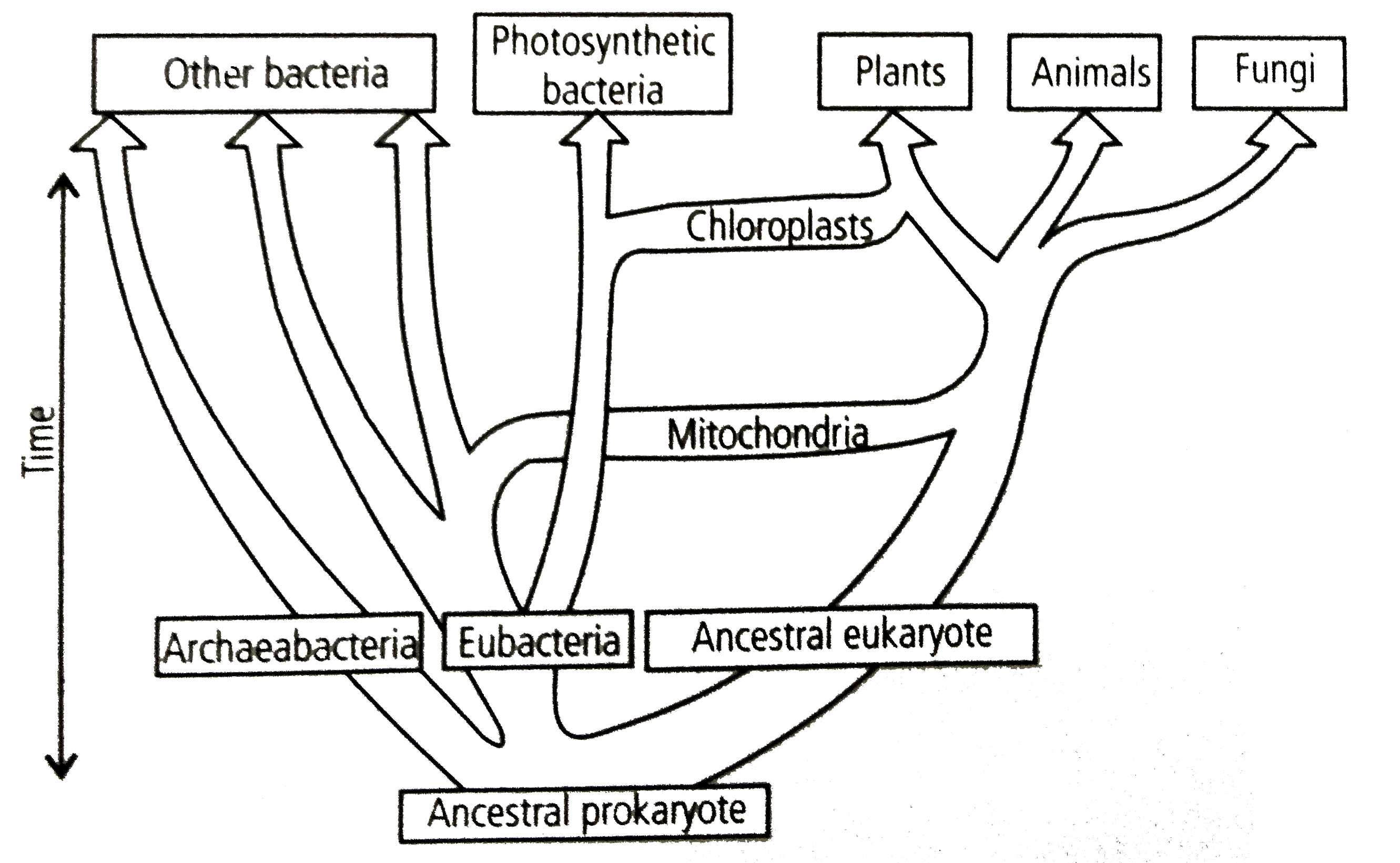Which one contains DNA (i) Mitochondria (ii) Chloroplasts (iii) Golgi bodies (iv) Ribosomes
I and II
ii and iii
I only
iv only
The correct Answer is:A
To solve the question "Which one contains DNA?" from the options provided: (i) Mitochondria (ii) Chloroplasts (iii) Golgi bodies (iv) Ribosomes, we can follow these steps:
1. Identify the Organelles:
- We have four organelles to consider: Mitochondria, Chloroplasts, Golgi bodies, and Ribosomes.
2. Analyze Mitochondria:
- Mitochondria are known as the powerhouse of the cell. They are involved in ATP production and are considered semi-autonomous organelles.
- Key Point: Mitochondria contain their own DNA, which is circular in nature.
3. Analyze Chloroplasts:
- Chloroplasts are found in plant cells and are responsible for photosynthesis. Like mitochondria, they are also semi-autonomous.
- Key Point: Chloroplasts also contain their own DNA, which is circular.
4. Analyze Golgi Bodies:
- Golgi bodies are involved in the sorting, packaging, and transport of proteins. They are membrane-bound organelles.
- Key Point: Golgi bodies do not contain their own DNA.
5. Analyze Ribosomes:
- Ribosomes are the sites of protein synthesis and are found in both prokaryotic and eukaryotic cells.
- Key Point: Ribosomes do not contain their own DNA.
6. Conclusion:
- From the analysis, we find that both mitochondria and chloroplasts contain DNA, while Golgi bodies and ribosomes do not. Therefore, the correct answers are (i) Mitochondria and (ii) Chloroplasts.
Final Answer:
Mitochondria and Chloroplasts contain DNA.
---
- We have four organelles to consider: Mitochondria, Chloroplasts, Golgi bodies, and Ribosomes.
- Mitochondria are known as the powerhouse of the cell. They are involved in ATP production and are considered semi-autonomous organelles.
- Key Point: Mitochondria contain their own DNA, which is circular in nature.
- Chloroplasts are found in plant cells and are responsible for photosynthesis. Like mitochondria, they are also semi-autonomous.
- Key Point: Chloroplasts also contain their own DNA, which is circular.
- Golgi bodies are involved in the sorting, packaging, and transport of proteins. They are membrane-bound organelles.
- Key Point: Golgi bodies do not contain their own DNA.
- Ribosomes are the sites of protein synthesis and are found in both prokaryotic and eukaryotic cells.
- Key Point: Ribosomes do not contain their own DNA.
- From the analysis, we find that both mitochondria and chloroplasts contain DNA, while Golgi bodies and ribosomes do not. Therefore, the correct answers are (i) Mitochondria and (ii) Chloroplasts.
Mitochondria and Chloroplasts contain DNA.
Topper's Solved these Questions
- STRUCTURE OF THE CELLBOOK - DINESH PUBLICATION ENGLISHCHAPTER - STRUCTURE OF THE CELLEXERCISE - Check your Grasp
17 Videos
- STRUCTURAL ORGANISATION IN ANIMALS BOOK - DINESH PUBLICATION ENGLISHCHAPTER - STRUCTURAL ORGANISATION IN ANIMALS EXERCISE - Check your grasp
10 Videos
- THE CELL : THE BASIC UNIT OF LIFE BOOK - DINESH PUBLICATION ENGLISHCHAPTER - THE CELL : THE BASIC UNIT OF LIFE EXERCISE - CHECK YOUR GRASP
12 Videos
Similar Questions
Knowledge Check
Given diagram illustrates an evolutionary tree.

Which of the following statements can be deduced from the given evolutionary tree?
(i) The ancestral eukaryotes were anaerobic.
(ii) All eukaryotes were anaerobic.
(ii) All eukaryotes possess mitochondria.
(iii) Eubacteria and Eukaryota have a common ancestor whereas Archebacteria have a unique and independent origin.
(iv) Mitochondria and chloroplasts have similar genomes.
(v) Mitochondria are presents in plants, animals and fungi.
(vi) chloroplasts and mitochondria arose asendosymbionts.
(vii) Fungi and animals lost chloroplasts during evolution.Aiii,v and viBi,v and viCii,iii,iv and vDi,v,vi and viiWhich of the following do prokaryotes possess ?
(a) Mitochondria
(b) Golgi body
(c) Meiotic mechanisms
(d) RibosomesAMitochondriaBGolgi bodyCMeiotic mechanismsDRibosomes
Why are the following parts important to a plant cell?
(i) Mitochondria (ii) Chloroplast (iii) Cell wall (iv) Nucleus (v) Vacuole
View SolutionRibosomes of bacteria mitochondria and chloroplasts are of
View SolutionThe presence of DNA in mitochondria and chloroplast supports the hypothesis that
View SolutionWhich of following is not common in chloroplasts & mitochondria ?
View SolutionThe correct order of increase in the size of the structures listed below is
(i) Proteins
(ii) Plant cell
(iii) Mitochondria
(iv) Ribosomes
View SolutionNucleotides/nucleic acids occur in
(a) Ribosomes
(b) Mitochondria
(c) DNA, RNA, chloroplasts and nucleus
(d) All the above
View Solution
